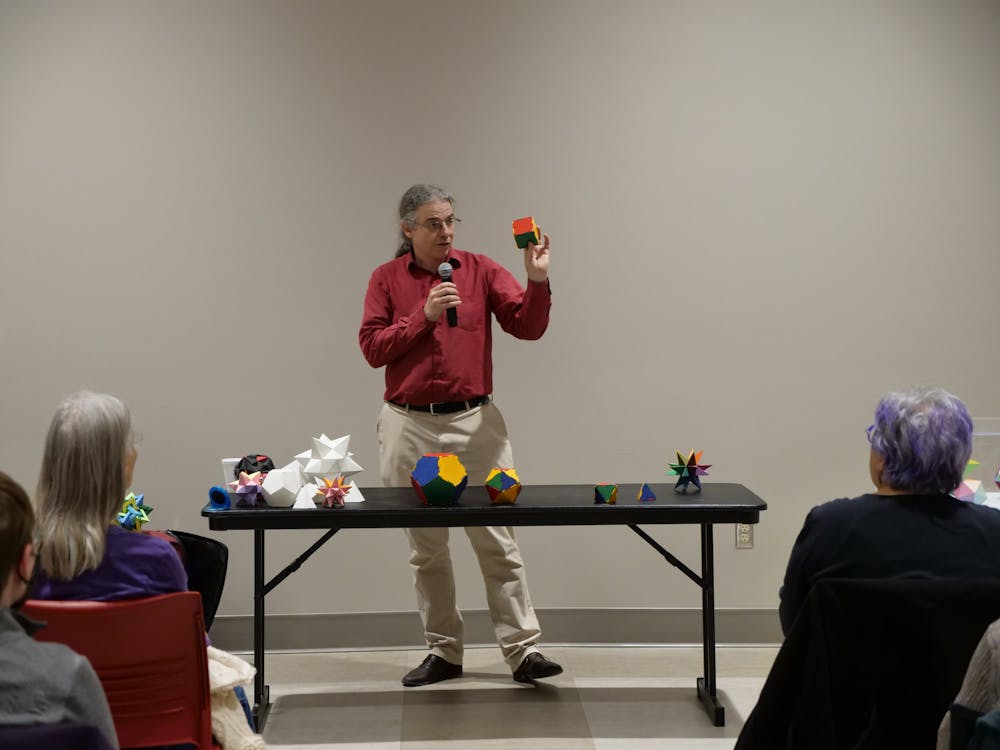Morton C. Bradley, Jr. brought together geometry and art through his uniquely shaped sculptures. To celebrate the artist’s legacy, “Math Meets Art” took place 4 p.m., Feb. 15, in the University Collections at McCalla School.
Bradley, an artist who earned his fine arts degree at Harvard in 1933, was well known for his colorful and geometrical sculptures made of metal. Bradley’s mother and grandmother grew up in the Wylie House located in Bloomington, where Bradley had regularly visited. Due to this connection, he donated most of his work —more than 300 pieces — to Indiana University.
The event began with a presentation by Dylan Thurston, a professor in the Department of Mathematics who studies low-dimension topology, which is a branch of topology that focuses on objects that are four dimensions or fewer in nature. Thurston spoke about the different geometric structures present/visible throughout Bradley’s work.
“For me, a lot of the appeal in math is just the beauty of the way things fit together, and often that’s much more abstract,” he said. “But with these sculptures you can see things are literally fitting together.”
After Thurston's presentation, attendees were given the opportunity to participate in hands-on activities. This is where they could make geometric sculptures out of paper, marshmallows and dry spaghetti noodles.
Following that, Martha MacLeish, an associate professor in the Eskenazi School of Art, gave a talk on the emphasis of color theory in art. She provided different examples of how and why different colors can be perceived differently.
“As you look at that three-dimensional form, you can see that the color is moving in ways that seem to be at the same pace with the geometry,” she said.
Attendees were again introduced to different hands-on activities, all of them pertaining to how color was perceived in different ways. In one activity, participants cut out strips of colorful paper and pasted them together in order to test out the different proportions and color sequences.
A community member at the event, Susan Archibald, said it was very interesting to consider how a person’s perception of something could be very different based on context, especially how perceptions of color could change based on its surroundings.
“Perception is a part of all of our lives and everything we do is subjective,” she said. “This is proving that.”
The galley featuring Bradley’s art, located on the second floor in the McCalla building, is open for anyone to view. It showcases many of his geometrically shaped sculptures, including two titled “Picasso” and “Lochness.” Viewers are also welcome to learn more about Bradley’s history and the process behind his unique sculptures.
This event was the first of two celebrating the collaboration between the arts and math. The second event, entitled “Science Meets Art” will take place 4 p.m., Feb. 29, in the Wylie House Museum. More information can be found on their website.




